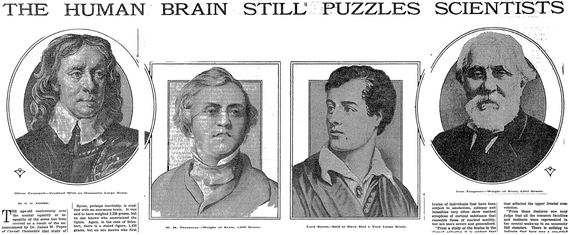No matter how exciting the topic, your mind is bound to wander at some point when you're sitting in a room for several hours listening to scientific presentations. This is exactly what happened to me during the meeting between the World Health Organization (WHO) and the Organization for Human Brain Mapping (OHBM) in Geneva. As a history of science nerd, when my mind wandered, it wasn't about what I'd be having for lunch or a new beer I might try after the meeting was over. Instead, my mind wandered to a 1927 headline from the New York Times I recently stumbled upon that read, 'The human brain still puzzles scientists.' I began to wonder what headlines would look like 90 years from now and how the conversations in the room were actively shaping the headlines of the future.
In 1927, the human brain was still puzzling scientists. 90 years later, it continues to puzzle scientists! During the joint meeting between the World Health Organization and the Organization for Human Brain Mapping, my mind wandered to what headlines would read 90 years from now, and how the conversations we were having were shaping those future headlines. Image source: October 9th, 1927 issue of The New York Times. Link to online version can be found here.
And I thought of this again a few weeks ago during the Dialogues between Neuroscience and Society lecture at the Society for Neuroscience meeting given by Dr. Shekhar Saxena, the Director of the Department of Mental Health and Substance Abuse at WHO. So, let's try and predict the future. In a prior post, we learned about how there are many different brain projects and initiatives, and that each one has related, but different goals. Recently, a new worldwide brain mapping project was formed geared toward additional coordination and collaboration across countries to build more tools, translational applications, and, hopefully, enhance the guidance of our brain-aware societies. What does this mean for our future? Well, I can't tell you exactly when and how we are going to cure Alzheimer's, or pinpoint the origin of consciousness. Instead, I am confident of the following three things that will be accomplished from current and future collaborations:
- New brain mapping tools and techniques will be created. Collaborations breed creativity, and if the last few decades of neuroscience research are any indication, we will continue to build and create novel tools to map and measure the brain at rates that will likely exceed anything we've seen in prior decades.
These were just some of the topics that were covered during the WHO/OHBM meeting full of motivated people actively trying to figure out solutions to these puzzles. So, in 90 years, will headlines read, 'The human brain no longer puzzles scientists?' I don't really know. But, what I do know is that these international collaborations, initiatives, and joint conversations will continue to increase the frequency of brain puzzles solved over the next century. And with every solution, new puzzles will result, new collaborations will be made, and solutions to new puzzles will be underway. That's just how science works and that's what keeps our minds wandering for the next solution to improve international brain awareness and global public health.
Kevin S. Weiner is a neuroscientist, as well as member of the Organization for Human Brain Mapping (OHBM) and writes for the Communications/Media Team. The OHBM Media Team brings cutting edge information and research on the human brain to your laptops, desktops and mobile devices in a way that is neurobiologically pleasing. For more information about brain mapping, follow www.humanbrainmapping.org/blog or @OHBMSci_News

